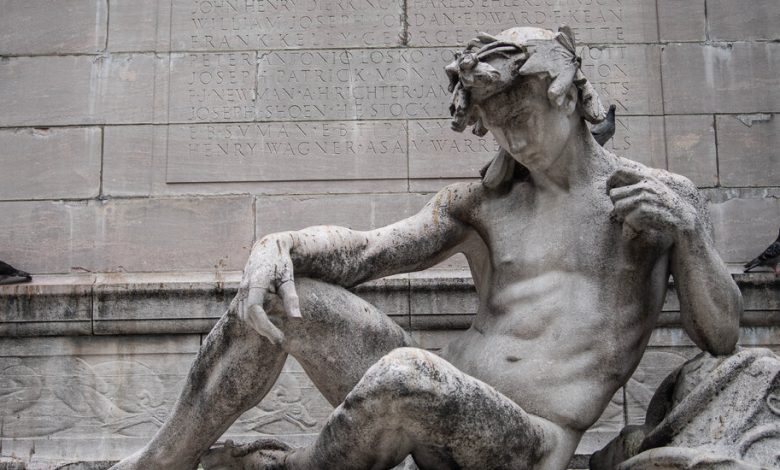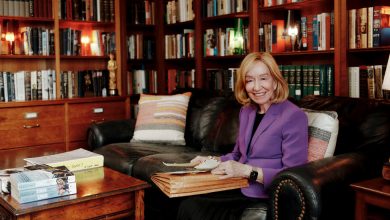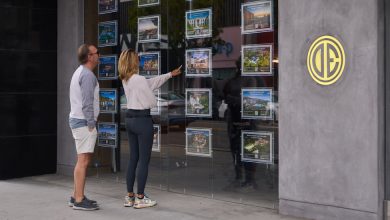How Six Italian Brothers Shaped the Story of New York

Few people have shaped the streetscape of New York as prominently as the stone-carving Piccirilli brothers, six Italian immigrants who turned out one important public sculpture after another at their studio complex in the Bronxstarting in the 1890s.
From the Alexander Hamilton U.S. Custom House at Bowling Green to the Bronx Zoo, from the figures of George Washington on the Washington Arch in Greenwich Village to the recumbent lions at the flagship building of The New York Public Library, the Piccirillis left their mark all over town.

The allegorical figure of America at the Alexander Hamilton U.S. Custom House at Bowling Green, one of the Four Continents carved by the prolific Piccirilli brothers from designs by Daniel Chester French.Credit…Brittainy Newman for The New York Times
“You think about the number of works that the Piccirilli brothers carved, they’re everywhere,” said Thayer Tolles, curator of American paintings and sculpture at the Metropolitan Museum of Art. “It’s not just the firemen’s monument and the Frick, it’s the New York Stock Exchange, it’s the Brooklyn Museum. They’re everywhere you know and you don’t know.”
The brothers — Ferruccio, Attilio, Furio, Getulio, Masaniello and Orazio — deftly juggled dual professional identities. While their main business was executing the visions of famous sculptors like Daniel Chester French, whose design for the figure of Abraham Lincoln the Piccirillis carved out of 28 blocks of Georgia marble weighing 150 tons for the Lincoln Memorial, they also sculpted their own original works.
Attilio and Furio were academically trained in Rome, and Mr. French esteemed the two men so highly as artists that he acquired original works by both for the Met while serving as the head of the museum’s board of trustees sculpture committee in the early 20th century.
“If you just put aside the stone-carving aspect of their careers, each of them is incredibly accomplished in their own right as independent sculptors,” Ms. Tolles said of Attilio and Furio.
Nonetheless, the Piccirillis have been largely forgotten, lost in the shadow cast by renowned American sculptors like Mr. French himself.
Now, Eduardo Montes-Bradley, a 63-year-old filmmaker reared in Buenos Aires, wants to elevate the brothers’ legacy, casting a new spotlight on their work in a documentary he has been working on for two years. The film, “The Italian Factor,” portrays these carvers not as stereotypical unskilled immigrant laborers in “funny paper hats,” as he puts it, but rather as prodigiously talented artisans indispensable to public art in the city and in America at large.
“When we talk about the Piccirillis, we need to take our hats off,” Mr. Montes-Bradley said. “They were at the top of their trade and their father traced his lineage in sculpture to the Renaissance, when Michelangelo found the stone for ‘David’ in Carrara,” the marble center near the city of Massa, where the Piccirilli brothers grew up.
Traditional sculptors working in America during the 19th and most of the 20th centuries typically modeled their sculptures in clay and then cast them in plaster. Next, they relied on skilled carvers, often Italian, to translate their visions into stone using the plaster castings as guides. These stone-working artisans not only had the skill to reproduce the sculptor’s images with hammer and chisel, they were trained in the use of a crucial device, called a pointing machine, to accomplish the intricate task of rendering a sculptor’s design at a larger, sometimes monumental, scale.
For the Lincoln Memorial, for example, Mr. French sent a 7-foot plaster model of the president to the Piccirillis’ Bronx studio, where the brothers carved the colossal 19-foot statue that now broods over the National Mall in Washington, D.C.
On a recent morning, the evolution of stone-carving technology was on vivid display at the U.S. Custom House, a short walk fromwhere Attilio and Ferruccio Piccirilli arrived in Americaat the Battery in 1888. Standing in front of four monumental allegorical figures representing America, Europe, Asia and Africa, Mr. Montes-Bradley, in town from his home in Virginia to shoot video of Piccirilli sculptures, explained how the brothers used a pointing machine to carve the Four Continents from models by Mr. French.
The machine was a precise measuring device, using a system of adjustable metal arms and pointers that could be placed on any point of a sculpted model, such as the crown of the head, and used to locate the corresponding point on the surface of the marble copy.
Just as Mr. Montes-Bradley was explaining that the pointing machine had since been superseded by laser technology, he spotted two workers with a device mounted on a tripod. He bounded over to the man in charge, Aaron Gonzales, and plied him with questions.
“We are laser scanning” the facades of the Custom House and its sculptures, Mr. Gonzales said, to create “virtual models” of the building that could be used for a future repair and alteration project. “This machine is capturing millions of points a second,” he said, gesturing at his Faro laser scanner. “It’s incredible technology.”
Mr. Montes-Bradley grinned. “The laser can make it easier and faster,” he said, “but never better. Because the soul of the artist is missing.”
That’s where the Piccirilli brothers come in.
In the decades before the brothers and their father, Giuseppe,arrived in New Yorkand opened their first studio in a repurposed horse stable on West 39th Street in Manhattan, sculptors working in America typically shipped their plaster models to Italy to have them translated into marble by carvers there. The process could take a year.
But there came “a moment of revelation,” Mr. Montes-Bradley said, when Mr. French discovered the Piccirillis’ Manhattan studio. “When he walked into this room, he must have said, ‘My god, this looks like the great studios of Florence.’ It was eye-opening, and that’s when I like to think the American Renaissance took off.”
Over the next 35 years, Mr. French hired the Piccirillis to carve all but two of his stone sculptures, and the Piccirilli studio helped establish New York as a major center of art production, according to an essay by Mary Shelley and Bill Carroll in the Bronx County Historical Society Journal. The family’s studio operations were directed by Giuseppe, the patriarch, until his death in 1910, when Attilio assumed leadership.
“I think French would be the first to say that the Piccirillis were better stone carvers than he was,” said Daniel Preston, a co-editor of Mr. French’s papers. He added that Mr. French even tried and failed twice to persuade the officials in charge of the Lincoln Memorial to add the Piccirilli name to the monument.
(On Oct. 25, the preservation group Landmark West! will host a Zoom talk on the Piccirillis by the sculptor John Belardo.)
The brothers’ complex on East 142nd Street, in the Mott Haven section of the Bronx, comprised a pair of brick studio buildings, one adorned with a medallion and reliefs, flanking an older studio and rowhouse combination.
Standing inside “this busy hive,” W.M. Berger wrote in Scribner’s Magazine in 1919, it was easy “to feel that this place resembles, with its mountains of marble and granite, its antique busts and plaster reproductions of Greek and Roman art, more the ancient ‘bottega’ where the old Italian masters of the Renaissance carved their masterpieces, than anything which our modern city can offer.”
Original works sculpted by the Piccirillis include “Indian Law” and “Indian Literature,” two allegorical figures at the cornice of the Brooklyn Museum, and the exterior lunettes at the Frick Collection — as well as some interior architectural decorations at the Frick, according to information Mr. Montes-Bradley recently unearthed in documents obtained from the collection’s archives.
In 1901, Attilio found new prominence by winning the competition to create the sculptures for the Maine Monument at Columbus Circle.
“That’s an immigrant success story, but still he does ‘The Outcast’ because he doesn’t feel fully part of it all,” said Mr. Montes-Bradley, referring to a moving sculpture that was once displayed at St. Mark’s Church in-the-Bowery. “The Outcast,” sculpted by Attilio in marble, depicted a seated, beleaguered male nude with his knees drawn to his chest, one hand gripping his shoulder and the other shielding his head as if from a blow. Mr. Montes-Bradley, whose paternal grandfather was an Italian native, believes that the work reflects its creator’s profound alienation at a time of rampant anti-Italian sentiment in the United States.
“That man was in pain,” he said of Attilio. “What he’s exteriorizing there is that money and success are not everything: ‘Though I’m successful, I don’t feel well. I feel I don’t belong.’”
When given artistic freedom, Attilio created sculptures that moved from the academic figurative style of The Firemen’sMemorial at 100th Street and Riverside Drive (which bears his signature) toward a more modernist approach. “The Joy of Life,” installed above the entrance to 1 Rockefeller Plaza in 1937, is a polychrome bas-relief that seems a closer cousin to some of the works of Pablo Picasso than those of Mr. French.
Among the three original Piccirilli works on display at the Met is “Fragilina” (1923), an ethereal, idealized female nude in marble sculptedby Attilio with attenuated arms and simplified facial features and hair. Ms. Tolles, the museum curator, said that the work showed the artist moving toward smoother surfaces and a greater stylization of forms, suggesting that he was “not as bound to American sculptural tradition, and maybe more willing to experiment.”
Mr. Montes-Bradley, who made a pilgrimage to marvel at “Fragilina” not long ago, had a more visceral response.
“She shows more than she reveals, and she reveals more than she shows,” he said of the statue.
Attilio Piccirilli died at the 142nd Street studio in 1945 and was buried with his family at Woodlawn Cemetery in the Bronx. Today the single ornament marking the many graves in the main family plot is a bronze sculpture by Attilio. Called “Mater Amorosa,” it is a copy of two figures from the Maine Monument, a mother comforting a grieving child.
The Piccirillis’ mother was so deeply important to them that after her death in Italy in 1921, they had her body transported to New York. It is perhaps at the moment of her burial in the Bronx that Attilio, the creator of the heart-rending sculpture “The Outcast,” first felt fully at home in America.
“It is when you bury one you have loved in a country’s soil,” he said in a 1940radio broadcast about American identity, “that you realize you belong to that soil forever.”





